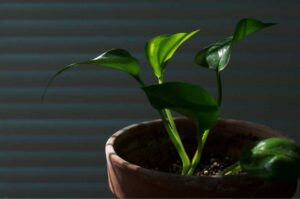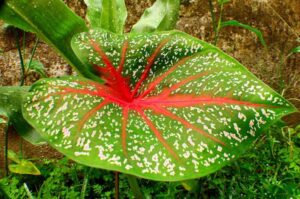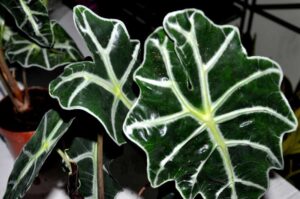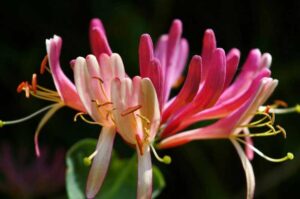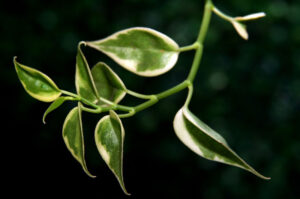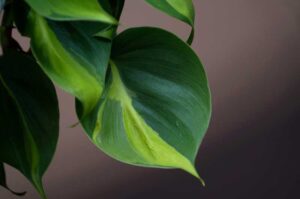Why Is My Alocasia Not Growing? (Causes and their Solutions)
The stunning foliage of an Alocasia plant will always increase the beauty of your indoor space. It is needless to say that, these plants, just like other houseplants need proper care and the right environment to grow. And if not provided the same they will start showing slow or stunted growth, even no growth. This article will make you aware of such issues for which your Alocasia plant is not growing.
The main causes of an Alocasia plant not growing are overexposure to sunlight, overwatering, underwatering, temperature stress, and lower humidity levels. Other reasons that equally contribute to the detrimental phenomenon are the use of improper potting soil, pest infestation, and overfeeding (overuse of fertilizers).
But surprisingly all that these plants require for their proper growth, is a keen eye. This is because they will flood you with distress signals and signs if something is wrong with them and all you need to do is keep an eye out for such signs.
Common signs like drooping of leaves, wilting, turning yellow, etc., often point towards the bigger problem, that we will be discussing in detail in the following paragraphs, i.e. stunted growth or slow growth.
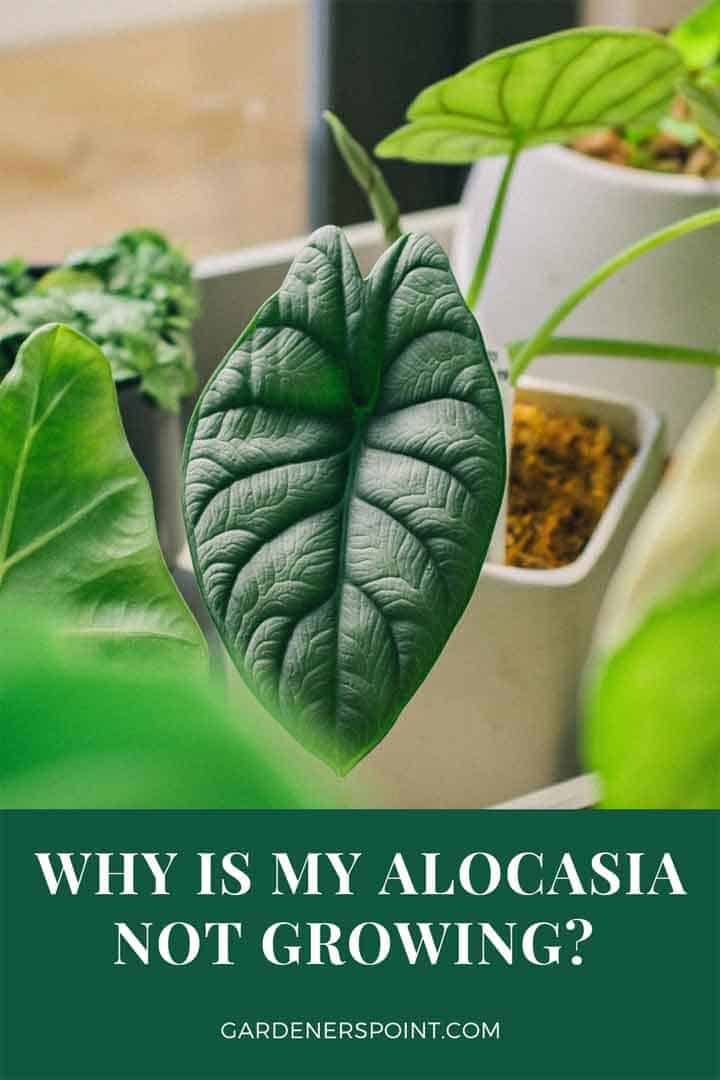
Reasons for your Alocasia plant not growing
Here is a list of problems, that are preventing your Alocasia plants from growing. Your plant might be facing any of the issues (either any one or a combination of issues) for which it is showing stunted growth.
If you can figure out the issues and take the necessary measures to prevent them, your Alocasia plant will again start to show some new and quick growth.
Overexposure to Sunlight
The Alocasia plants grow under the shade of huge canopies in their native surroundings. Therefore, naturally, their requirement for sunlight and response to it has been developed in the same way, and they expect the same no matter where they are.
Thus, exposing them to direct sunlight (when the rays of the sun directly fall on their leaves) is harmful to them and manifests itself in a number of ways. Just like
- Wilting and drooping of leaves.
- Leaves turning yellow and sunburn.
- Stunted Growth.
Apart from these it also results in dehydrating the plant which further slows down the plant’s growth.
Things you can do to prevent overexposure to sunlight
An area getting partial shade is the best place for the Alocasia plant. All that thing the plant needs is bright and indirect sunlight.
You can find a better spot to place your plant by following the given points.
- Put your plants on the northern windows of your house.
- Don’t keep them in the sun for long durations.
- Keep them a few inches away from the window sill. It will prevent direct sunlight from falling on the leaves.
- Use a white cloth to create a screen between the window panes and the plants.
Remember Alocasias require bright indirect light for proper healthy growth and thus providing them with the same will get them back to growing in no time.
Never keep your plant in a completely dark place. Doing this occasionally will not have any impact on your plant, but doing this for a longer period of time, on a regular basis will also hamper the growth of your plant.

Overwatering
Watering your plant more frequently than its need is termed overwatering. Overwatering leads to several issues, most of which are caused as a direct result of waterlogging and root suffocation.
Waterlogging is the term used to describe the situation when the soil becomes soggy with water and the air cavities of the soil are blocked due to excess water. This suffocates the roots by depriving them of air and subsequently causes root rot and fungal infections.
Reasons for overwatering may include
- Watering frequently even when the soil is moist.
- Lack of drainage holes in the pot for the excess water to leave.
- Potting soil with poor drainage.
- Keeping the plant in the complete shade where there is no sunlight.
If your plant is suffering from overwatering then additional distress signals apart from slow or stunted growth can be the wilting of its leaves and the drooping of the plant.
How can you save Overwatered alocasia?
To save your Alocasia from overwatering, you can do the following things.
- Use a pot with a large number of drainage holes for the excess water to flow out.
- Select a well-draining potting soil for your Alocasia plant.
- Before watering check if the soil is moist. Try to put one finger down 1-2 inches into the soil, if you are being able to do so there is no need to water the plant as the soil is already moist.
- Keep the plant in bright indirect light.
Underwatering
Underwatering is the exact opposite of overwatering and, in my opinion, more dangerous. This is because in this case, you are dehydrating the plant, i.e., not providing even the least bit of water that the plant needs for proper growth and functioning.
The main reasons for underwatering and plant dehydration are
- Using potting soil that cannot hold water.
- Irregular watering habits.
- Keeping your plant in direct sunlight. These plants when kept in direct sunlight tend to remain dehydrated as the strong light and heat from the sun take away water and moisture from the soil. In effect making the soil dry.
A plant suffering from underwatering will show yellow leaves, brown leaf edges, and also stunted growth.
But you can revive your plant back to its normal state before it’s too late.
How can you prevent your Alocasia plant from Underwatering?
- Keep an eye out for dry soil. If the soil is dry water thoroughly (but make sure the pot has enough drainage holes as already mentioned)
- Keep the plant away from direct light.
- Add some cocopeat to the potting soil. This will improve the water-holding capacity of the potting soil.
Following these simple steps will revive your plant and once again it will show growth.
You may also like- What is coco peat? How to make coco peat at home?
How often should I water my Alocasia plant?
There is no direct answer to this question. The watering schedule will depend on various factors like the potting soil you are using, the place where the plant is located, several atmospheric factors like humidity, temperature, etc.
So avoid using a watering schedule for your Alocasia plant. Rather you can manually check when your plant is actually requiring water.
Poke your finger one to two inches below the potting soil. If it is feeling wet, then there is enough moisture in the soil. No need to go for watering.
If the soil is feeling dry, then go for watering.
Temperature stress
Alocasias are tropical plants and grow on the understory, as such, they require temperatures around 60°F to 85°F, fortunately, this is the temperature range of our homes too.
But still, the plants can suffer from temperature stress if it falls below 60°F.
This can happen if the plant is kept in such a place where it encounters cold or hot air drafts. Typically placing these plants in the vicinity of an air conditioner causes this problem. And if this is the case, the plants will again not show healthy growth.
If this is the issue with your plant then simply removing it from such a place and keeping it somewhere where the temperature is stable and in between 60°F to 85°F will solve the issue and put the plant out of its misery.
Lack of Humidity
Humidity is another important factor for the healthy growth of plants. Alocasias require high humidity in the air around them. And if they do not get that they start wilting which also causes slow growth.
To maintain proper humidity around the plant all day you can simply follow the following steps.
- Use a humidifier around the plant. Remember you need to increase the humidity in the air surrounding the plant. A humid room might not always indicate that the air around the plant is the same.
- Group your plants. This will naturally raise the humidity levels because plants release water into the air by transpiration.
- Use a pebble tray (humidity tray). You can buy it online, or make one at your home. Learn how to make one here https://www.youtube.com/watch?v=YauDIfDXe9A.
Remember misting and increasing the humidity are two different things Misting is only useful for providing immediate moisture to the leaves but is not a long-term solution to humidity issues.
You may also like- Alocasia Silver Dragon Care- Alocasia baginda silver dragon
Fertilization Issues
Using fertilizers is a must for these plants. Using them every 3 to 4 weeks during the growing season in fast-acting liquid form is recommended.
As such many people overdo it when it comes to fertilizing the plant and this leads to adverse effects on the health of the plant and its growth.
Overfeeding causes the excess salt to accumulate on the soil surface and this, in turn, prevents the uptake of water by the plant subsequently leading to dehydration problems and stunted growth.
Overfeeding can be rectified by long deep waterings that will wash away the excess salt.
The goal is to provide the plant with enough nitrogen and phosphorus for its healthy growth. Using organic alternatives is also recommended if the option is available.
How often should I fertilize my Alocasia?
Using a balanced liquid fertilizer once a month is enough to provide the necessary nutrients to the plant. This is the ideal frequency to fertilize the plant during the summer and spring seasons.
But during the winters, the plant slowdowns its growth naturally. So no need to apply fertilizers frequently, rather you can apply once in two months.
Nutrients play a very key role in plant growth and development. They provide an attractive appearance, along with disease and abiotic stress resistance capacity to the plants.
Therefore you have to take care of the fertilization part of things as your first priority for all your plants.
You may also like- Why Are My Caladium Leaves Turning Yellow? (How To Fix It)
Use of poor potting soil
Using proper potting is critical if you want your plants to grow to their full potential. This is because potting soil directly affects other factors such as watering issues (over and underwatering), providing nutrients, ability to hold moisture, to name a few.
Improper potting soil mix can contribute to several issues for the plant.
- Losing water and dehydrating the plant.
- Holding excess water and causing root infection and root rot.
- Lacking nutrients essential for plant growth.
Potting soil used for house plants should be well-drained and have a high nutritional content.
The addition of perlite or pumice increases the porosity of the potting soil. Similarly, the addition of cocopeat improves the water holding capacity.
Pest Problems
Alocasias do not generally suffer from pest problems but keeping an eye out doesn’t hurt.
Pests such as aphids, mealybugs, spider mites are the common enemy of Alocasias. But checking the plant leaves from time to time and wiping them with a wet cloth is recommended.
Spraying neem oil is an effective method to control these common pests.
To learn more about plant pest control, you can visit https://smartgardenguide.com/common-houseplant-pests/.

Conclusion
Alocasias are not as fussy as many other house plants and are generally easy to maintain. But no plant on the entire planet, both indoors and outdoors, is immune to problems.
As such, maintaining a proper routine for tending to your plant is advised to anyone who is growing these beauties. Keep an eye out, point out the problems, and tend to them immediately and your plants will show healthy growth again in no time.

